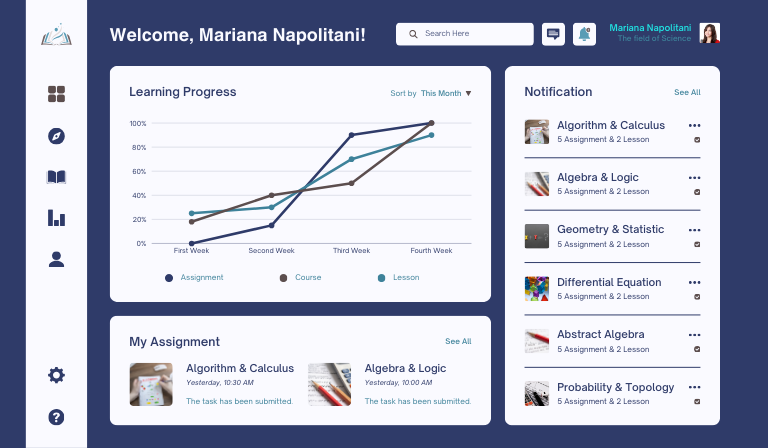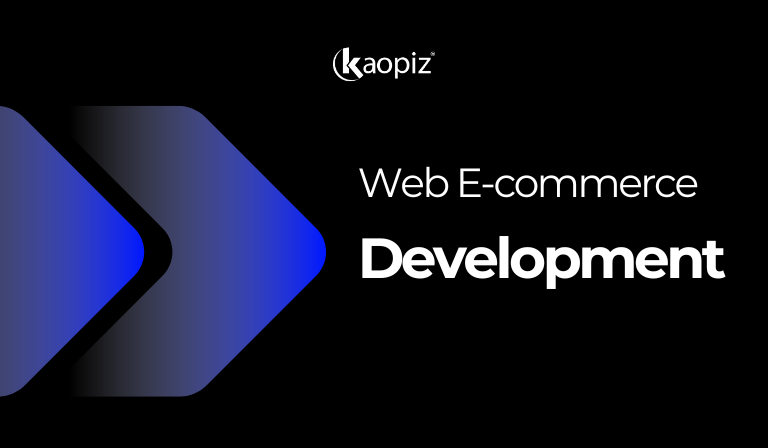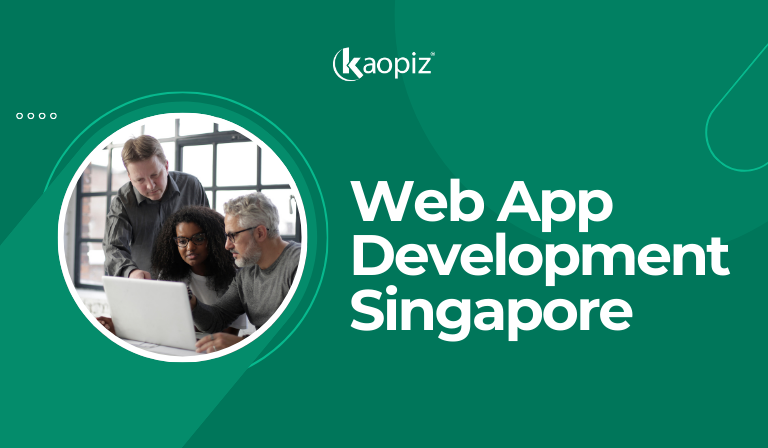Step-by-Step Guide to Developing a Learning Management System
The demand for Learning Management Systems (LMS) has surged as organizations and educational institutions embrace digital transformation. An LMS provides a centralized platform for managing educational content, tracking progress, and enhancing learning experiences. In this guide, we’ll walk you through developing an LMS from start to finish, covering everything from the concept to execution. Whether you’re aiming for a custom LMS or seeking an affordable solution, this guide will provide the insights you need.
Table of contents

What is an LMS?
A Learning Management System (LMS) is a software application designed to manage and deliver educational content. It supports various learning activities, such as:
- Hosting courses and training modules
- Tracking and analyzing learner progress
- Managing classroom activities virtually
- Assessing and grading student performance
LMSs cater to a broad audience, including businesses looking for employee training platforms, educational institutions, and e-learning providers. Different systems offer various features depending on the target audience and goals.
For more information on learning management systems, you can refer to U.S. Department of Education’s resource on online learning environments and their standards.
How to Come Up With Your LMS Idea
Before diving into the development, it’s essential to determine the purpose and scope of your LMS. Here’s how you can do that:
- Identify Your Target Audience: Are you developing an LMS for corporate training, K-12 education, universities, or self-paced learning platforms? Your target audience will dictate the features and design requirements.
- Set Goals: Define the main objectives of your LMS. Do you want to improve employee skills, enhance student engagement, or offer specialized training programs? Clear goals help shape the development process.
- Research Competitors: Study existing e-learning systems such as Moodle, Blackboard, and Canvas. Analyze their strengths and weaknesses to identify gaps your LMS can fill.
- Choose the LMS Type: Determine whether your LMS will be a Enterprise LMS, Academic LMS, or a Microlearning Platform. Each type serves different needs and requires specific features.
The development process begins with these foundational steps, ensuring that you have a clear direction for the rest of the project.
Check out our detailed article for a comprehensive planning guide: From Concept to Launch: Planning Your LMS
Must-Have Custom LMS Features
When building a custom LMS, it’s crucial to incorporate features that enhance the learning experience and streamline management. Below are some must-have LMS features:
a) User Management System
- Manage user roles (students, teachers, administrators) and permissions.
- Track user activities, progress, and achievements.
b) Course Management
- Create and manage courses, lessons, and assessments.
- Schedule classes, quizzes, and assignments.
c) Learning Content Management System (LCMS)
- Manage course content such as videos, documents, quizzes, and interactive activities.
- Support for multiple content formats and SCORM compliance for consistency and compatibility.

d) E-learning Systems Integration
- Integrate with other e-learning systems and third-party platforms like virtual classrooms (e.g., Zoom) and online libraries.
e) Analytics and Reporting
- Track learners’ performance with real-time analytics and reporting.
- Customizable reports to evaluate overall effectiveness and identify areas for improvement.
f) Gamification and Engagement Tools
- Incorporate badges, leaderboards, and rewards to motivate learners.
- Discussion forums and chat features for peer-to-peer and teacher-student interactions.
g) Mobile Accessibility
- Ensure your LMS is responsive and accessible on mobile devices to reach a wider audience.
h) AI Features and Solutions
- Personalized Learning Paths: Use AI to customize courses and learning materials based on individual learner behavior and progress.
- Predictive Analytics: Leverage AI to forecast learner performance and provide early intervention recommendations for at-risk students.
- Smart Content Curation: Automatically organize and suggest content based on user preferences and learning history.
- Chatbots for Support: Deploy AI-driven chatbots to provide real-time support and instant responses to common learner queries.
- Automation of Administrative Tasks: Automate tasks such as grading, enrollment, and scheduling to reduce manual work and enhance efficiency.
Explore how AI enhances LMS in our latest article. Learn more here: AI in Learning Management Systems
These features, especially when enhanced with AI capabilities, create a robust, efficient, and personalized LMS platform, making it an all-in-one solution for managing educational content and improving the learning experience.
Development Process – How to Create an LMS from Scratch?
Creating an LMS requires a step-by-step approach to ensure that the platform meets the needs of the target audience and aligns with industry standards. Below is an overview of the development steps:
1: Define Requirements
- Outline the functional requirements (e.g., user management, course creation, analytics).
- Detail non-functional requirements such as scalability, security, and usability.

2: Choose the Technology Stack
- Select programming languages (e.g., JavaScript, Python) and frameworks (e.g., React, Django) suitable for building scalable and responsive LMS platforms.
- Choose a database system (e.g., MySQL, MongoDB) for storing user data, course information, and progress tracking.
- Opt for cloud platforms (e.g., AWS, Azure) for hosting your LMS, ensuring reliability and flexibility.
3: Design the LMS Architecture
- Plan the architecture, focusing on the front-end (user interface) and back-end (server-side).
- Implement REST APIs for communication between the front-end and back-end services, ensuring modularity and scalability.
4: Develop Core LMS Features
- Start with the most critical components like user management, course creation, and content delivery.
- Develop the LCMS to support multimedia formats and interactive learning activities.
5: Integrate Third-Party Tools
- Connect your LMS with tools for virtual classrooms, payment gateways, and communication platforms.
- Incorporate analytics tools for tracking performance and generating reports.
6: Test the LMS Thoroughly
- Perform unit testing, integration testing, and user acceptance testing (UAT) to identify and resolve issues.
- Ensure that the LMS meets security and compliance standards to protect user data.
7: Launch and Maintain
- Deploy the LMS on the selected cloud platform.
- Continuously monitor and update the system based on user feedback and evolving technology trends.

Kaopiz’s Expertise in the Development of LMS Software
At Kaopiz, we specialize in developing customized LMS solutions tailored to meet the unique needs of our clients. With our expertise in e-learning systems, we provide a range of services, including:
- Custom LMS Development: We build tailored platforms that incorporate advanced features such as gamification, mobile access, and personalized learning paths.
- Affordable LMS Solutions: Our team provides cost-effective options, ensuring high-quality software within budget constraints.
- Integration Capabilities: We excel at integrating LMS platforms with other educational tools, payment gateways, and content management systems.
- Learning Analytics Integration: We provide insights into learner behavior and performance, allowing organizations to continuously improve their educational offerings.
Whether you’re looking for a simple and affordable LMS or a complex system with advanced capabilities, Kaopiz has the expertise to deliver. Contact us today to learn more about our LMS development services and how we can transform your learning platform.
Trending Post





















No Comments yet!